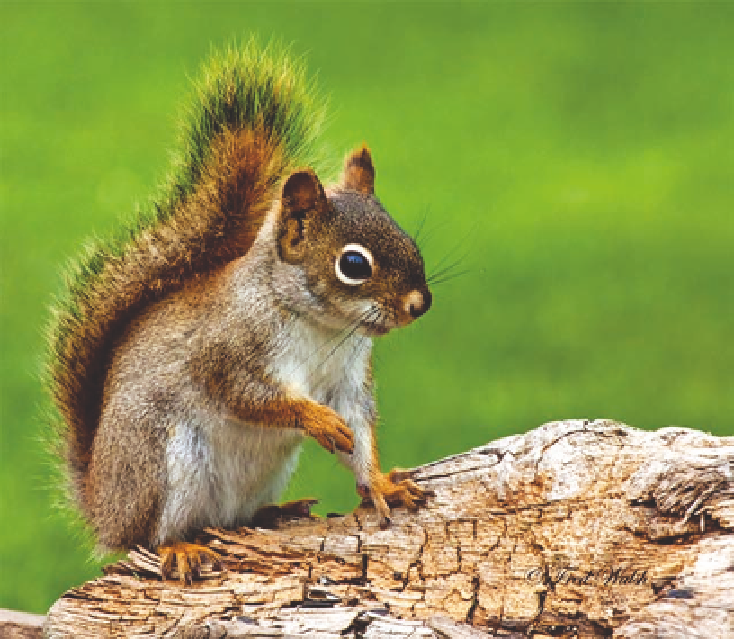Geoscience Reference
In-Depth Information
Fig. 11.4. Red squirrels have coexisted
with lodgepole pine for millennia.
Populations that depend on serotinous
lodgepole pine cones have extraordi-
narily strong jaw muscles for extract-
ing the nutritious seeds from the
hard woody cones. the squirrels are
omnivores, as they also eat mushrooms,
bird eggs, and nestlings when available.
Photo by Fred Walsh.
talluto concluded that seed predation by red squirrels
reduces the occurrence of trees with serotinous cones.
thus, the characteristics of serotinous cones and the
proportion of serotinous trees in a specific forest is the
result of natural selection exerted by both the squirrels
and fire.23
23
Forest communities include hundreds or thousands
of species of native insects. Most are inconspicuous
and spend their lives quietly pollinating flowers or
decomposing dead organic matter. A few insects attract
attention, however, because they feed on living trees,
sometimes killing their hosts. one group—the bark
beetles—has gained prominence recently because these
insects are changing many forests in the Rocky Moun-
tains and westward. the causes and effects of bark
beetle outbreaks are examined later in this chapter.
into forests dominated by ponderosa pine or Douglas-fir
at lower elevations, lodgepole pine at mid-elevations,
and engelmann spruce and subalpine fir at higher eleva-
distribution of these tree species, and in some areas the
foothill vegetation grades directly into lodgepole pine
or Douglas-fir, as, for example, on the east slopes of the
Medicine Bow Mountains and around Jackson Hole and
the Sunlight Basin. Ponderosa pine is rarely found in
western Wyoming, where Douglas-fir forests usually
border the foothill vegetation.
intermingled with the coniferous forests are moun-
tain meadows, also known as parks, along with rib-
bon forests, snowglades, aspen groves, various kinds of
riparian communities, and shrublands or woodlands
dominated by mountain big sagebrush and limber pine.
the upper treeline—where the mountains extend that
high—is characterized by short, wind-pruned engel-
mann spruce, subalpine fir, and limber pine in most of
Wyoming ranges, though whitebark pine is typical of
the treeline in northwestern Wyoming and the north-
ern Rockies. in central colorado, bristlecone pine can
be found at upper treeline and also forms subalpine
woodlands in some areas.
The Forest Mosaic: Variation with Elevation
and Topography
the causes of vegetation changes with elevation have
been of interest to scientists for more than two cen-
turies. in the Rocky Mountain region, foothill grass-
lands, shrublands, and woodlands commonly grade

Search WWH ::

Custom Search